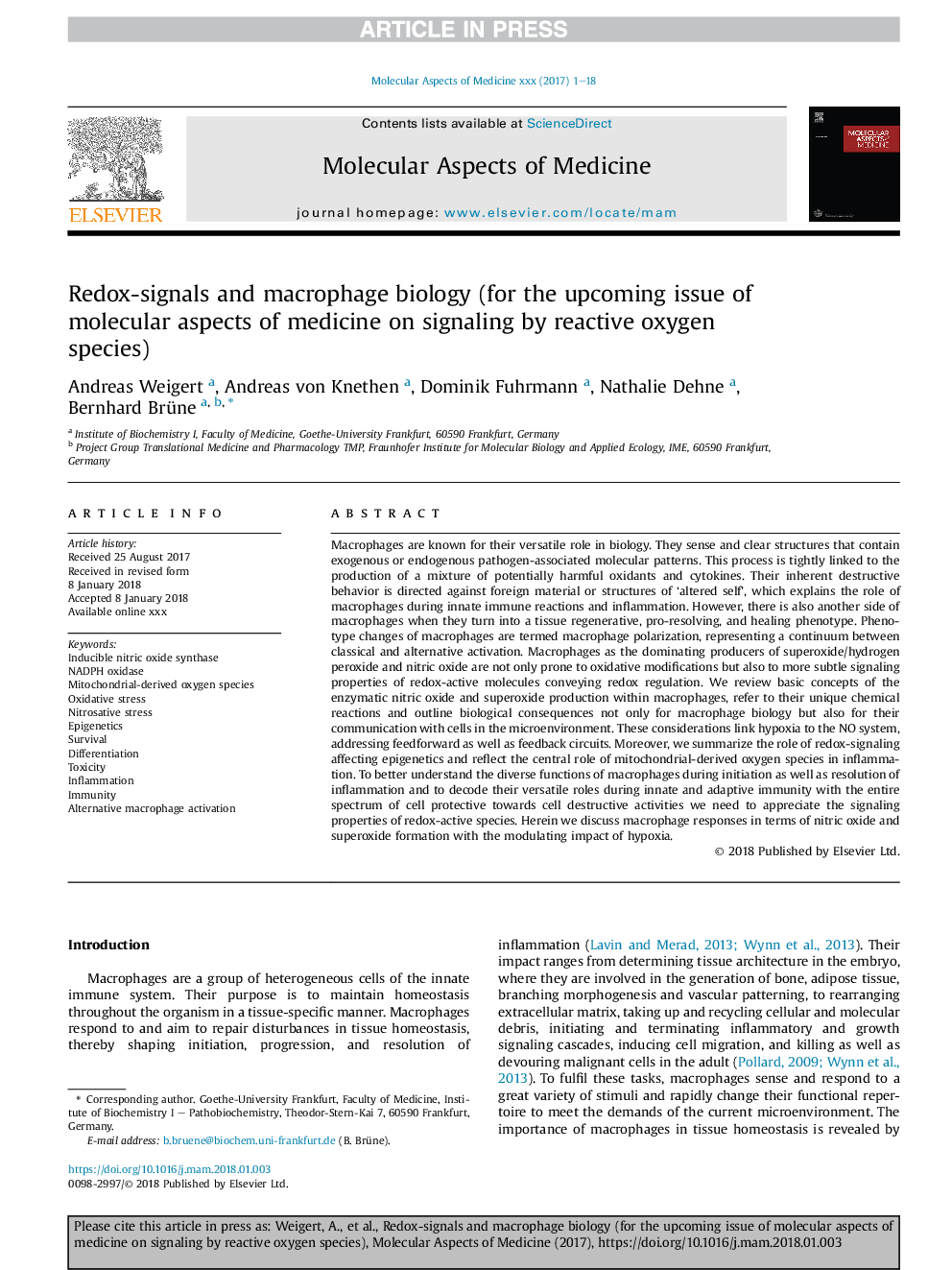| Article ID | Journal | Published Year | Pages | File Type |
|---|---|---|---|---|
| 10156953 | Molecular Aspects of Medicine | 2018 | 18 Pages |
Abstract
Macrophages are known for their versatile role in biology. They sense and clear structures that contain exogenous or endogenous pathogen-associated molecular patterns. This process is tightly linked to the production of a mixture of potentially harmful oxidants and cytokines. Their inherent destructive behavior is directed against foreign material or structures of 'altered self', which explains the role of macrophages during innate immune reactions and inflammation. However, there is also another side of macrophages when they turn into a tissue regenerative, pro-resolving, and healing phenotype. Phenotype changes of macrophages are termed macrophage polarization, representing a continuum between classical and alternative activation. Macrophages as the dominating producers of superoxide/hydrogen peroxide and nitric oxide are not only prone to oxidative modifications but also to more subtle signaling properties of redox-active molecules conveying redox regulation. We review basic concepts of the enzymatic nitric oxide and superoxide production within macrophages, refer to their unique chemical reactions and outline biological consequences not only for macrophage biology but also for their communication with cells in the microenvironment. These considerations link hypoxia to the NO system, addressing feedforward as well as feedback circuits. Moreover, we summarize the role of redox-signaling affecting epigenetics and reflect the central role of mitochondrial-derived oxygen species in inflammation. To better understand the diverse functions of macrophages during initiation as well as resolution of inflammation and to decode their versatile roles during innate and adaptive immunity with the entire spectrum of cell protective towards cell destructive activities we need to appreciate the signaling properties of redox-active species. Herein we discuss macrophage responses in terms of nitric oxide and superoxide formation with the modulating impact of hypoxia.
Keywords
Related Topics
Life Sciences
Biochemistry, Genetics and Molecular Biology
Biochemistry
Authors
Andreas Weigert, Andreas von Knethen, Dominik Fuhrmann, Nathalie Dehne, Bernhard Brüne,
